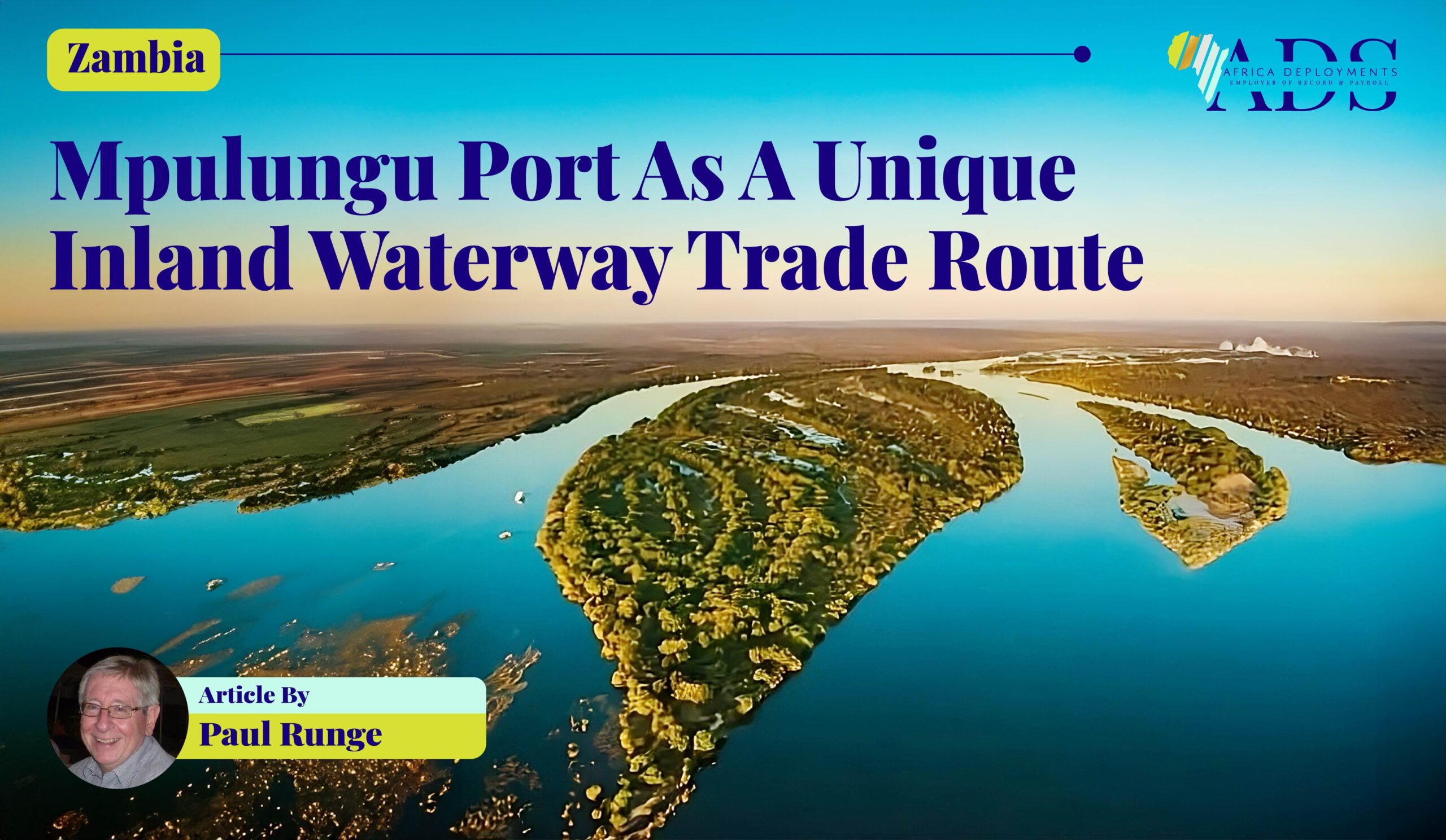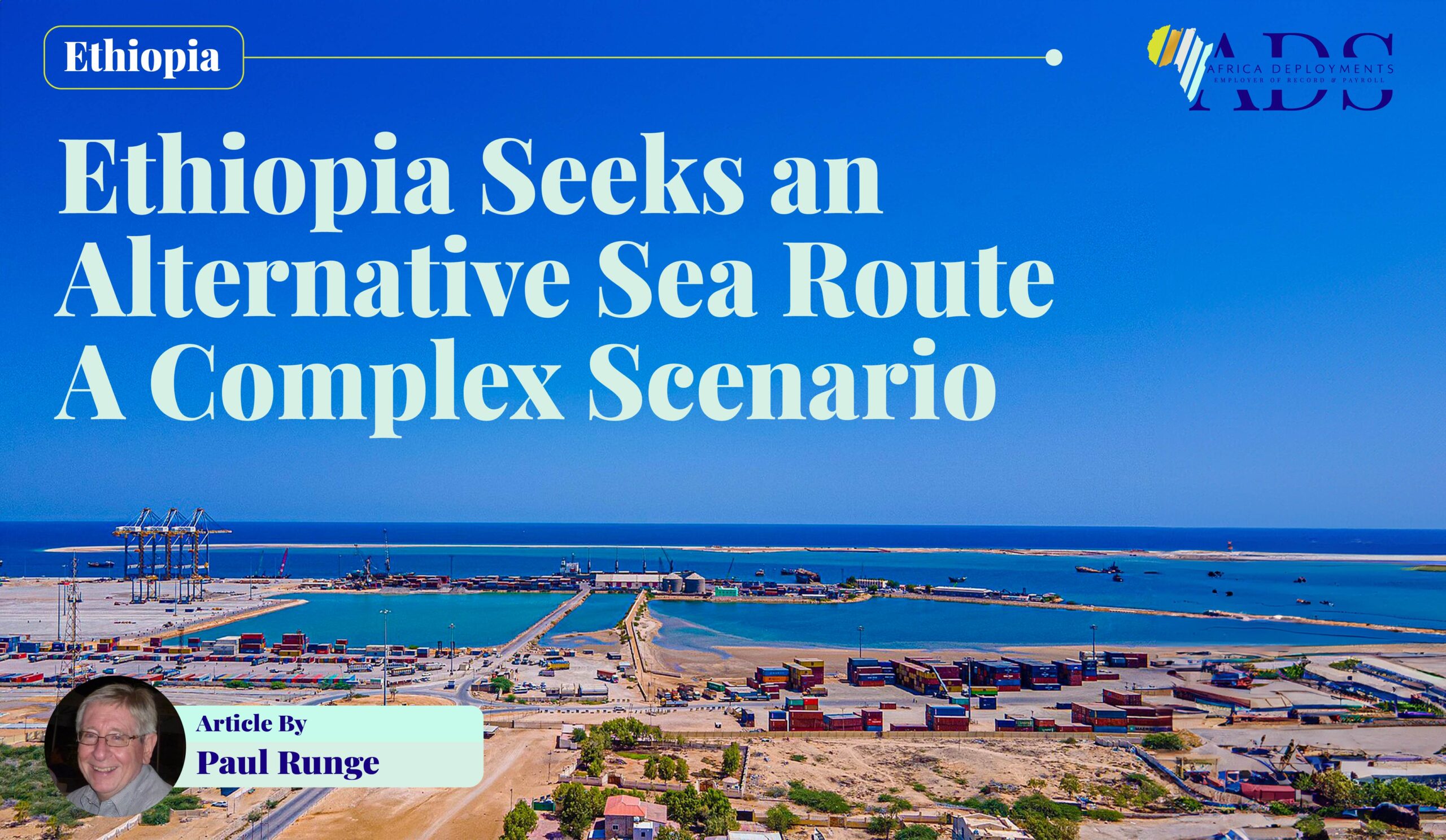
Zambia: Mpulungu Port As A Unique Inland Waterway Trade Route
One day I’ll get to visit Mpulungu…
I have to start with the confession that I have never been to Mpulungu before. I had my first opportunity in the very early 1990-s, when I was with the Africa division of the South African Foreign Trade Organisation (SAFTO). I had heard from my Zambian contacts that the port at Mpulungu (on the southern end of Lake Tanganyika, in the Northern Province), could be a major project. The old fishing and light cargo port was in dire need of expansion and modernisation. It was a launch point for a strategic inland waterway trade route, linking the lake ports of Rumonge and Kigoma in Tanzania with Kelemie and Kalundu/Uvira in the DR Congo, and ending at the northern terminus of Bujumbura harbour, Burundi. As a north-south corridor, it could establish linkages with the east-west corridors, especially those of Zambia and Tanzania.
I was fascinated by the prospect and prepared a business mission comprising representatives of various agencies and companies specialising in port development. But just a few days before our scheduled departure, I was instructed to attend and speak at a major conference in Europe. So, I very reluctantly assigned leadership of the mission to a colleague.
My next opportunity came much later, in September 2015. I was leading a business mission to Zambia in partnership with the Zambia-South Africa Chamber. The itinerary began with a visit to the Copperbelt, and ended with a visit to Mpulungu. I got as far as Kitwe and had to abandon the group. I had recently undergone a medical operation and one of my wounds began to give trouble. I had no option other than to quickly hitch a ride back to Ndola Airport and take a flight home.
Also in the very early 1990-s, I led a mission to Bujumbura. Time has rendered my recollections a little vague, but I do remember a lakeside restaurant offering excellent fish from the lake ‘au poivre vert’, a well-maintained golf course, and a group of hippos that freely wandered the streets at night. I also recall a well-functioning lake harbour, and the port officials remarking that trade on the lake would be far better if the Zambians would just improve their Mpulungu Port.
So, I can claim to have ‘one-ended’ direct, personal knowledge of the Lake Tanganyika trade route.

The state of Mupulungu Port in the early 1990’s…
The port was built in the 1930’s. My research told me that the name was derived from the local isiBemba language. Historically there was much trade in beads, and “Mphu Lungu” means “Give me the beads.”
Traffic was only around 60 000 tons per annum, with cement, cereals, sugar, wood and steel the main export commodities transported by a few vessels. All cargo was break bulk, and no container traffic was undertaken. Return, south-bound traffic from Bujumbura was very small.
The investigations and visit undertaken by SAFTO confirmed that the port was in dire need of repair and upgrading. The problems then identified included limited mooring space for vessels, an insecure wharf side, the need for extra lighting to permit night operations, and insufficient security. Our study listed the following basic initial requirements: lengthening the pier, stabilising the quay wall, installing lights in the warehouses, and erecting additional security fencing. Other long-term suggestions included container facilities, additional cranes and forklifts, cold-chain installations, and improving access roads.
Although more port studies have since been undertaken by agencies such as the European Union, the port has seen little further development until recent years.

Renewed government and donor attention to the port…
In 2016, the government undertook an environmental and social impact assessment, as well as a resettlement action plan for the port’s renovation. In 2017, the Zambian Minister of Housing and Infrastructure Development confirmed that the government had requested US$47 million from the African Development Bank (AfDB) and the European Union to fund the construction of the “new” Mpulungu Port. In 2014, the Maputo Harbour Corporation Limited (MHCL) was incorporated first under the Ministry of Transport and Communications and later under the country’s Industrial Development Corporation, which is responsible for leading the government’s commercial investments programme. In December 2020, MHCL signed a Memorandum of Understanding with the UK and USA-based infrastructure solutions company, eleQtra for a project that will “develop a scheduled marine transport service on Lake Tanganyika that will boost trade flows between Zambia, Tanzania, Burundi and the Democratic Republic of the Congo.” The MoU includes reference to the upgrade of Mpulungu to a fourth-generation port.
In 2013, the AfDB approved funding for the feasibility study and detailed engineering design for the revamp of Mpulungu. The AfDB in particular, has been supportive of the Lake Tanganyika Transport Development Project that encompasses the renovation of both Mpulungu and Bujumbura ports. In the case of Mpulungu, the objective is to increase annual cargo traffic from 200 000 tons to 800 000 tons and passenger throughput from 17 000 per annum to 236 000. The renovations at Mpulungu Port include port infrastructure expansion, navigation aids, a ro-ro ramp, passenger quay, slipway, embankment strengthening, administration block, mobile port crane, and a water level monitoring system. A new lodge and recreational area are also listed.

Bujumbura Port also set for a revamp…
The Japan International Cooperation Agency has developed a master plan for Port Sector Development in Burundi that focuses on the development of Bujumbura Port. The AfDB approved the project appraisal for the Rehabilitation of Bujumbura Port in 2019. It includes lengthened berths, a new breakwater, rehabilitation of the jetty, dredging, new cranes, navigation equipment, and three utility vessels, as well as administration offices and improvements to the access roads. A special recommendation is for the construction of a container berth.

A strong regional dimension…
The Lake Tanganyika Transport Development Project will not only greatly enhance trade between the four lake countries, but could also facilitate the movement of transit cargo between southern Africa (including South Africa) and the north-eastern markets such as Rwanda, Uganda, and South Sudan.
A special present for me…
It was my 60th birthday and my former colleagues from SAFTO decided that I needed a special present associated with my dream of finally getting myself to Mpulungu. The folder was adorned with a red ribbon and the cover read:
“Congratulations! You have adopted ‘Mpulungu’. Enclosed please find your official certificate of adoption and a photograph of your penguin.”
Signed by the Chief Executive Officer of the Southern African Foundation for the Conservation of Coastal Birds.






